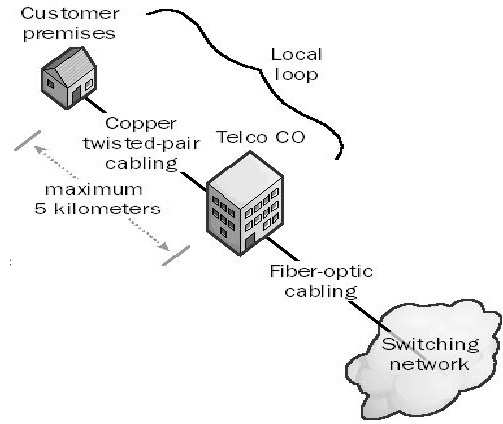Transmission on fiber optic wire requires repeating at distance intervals. The glass fiber requires more protection within an outer cable than copper. For these reasons and because the installation of any new wiring is labor-intensive, few communities yet have fiber optic wires or cables from the phone company’s branch office to local customers (local loop).
In telephony, a local loop is the wired connection from a telephone company’s central office in a locality to its customers’ telephones at homes and businesses. This connection is usually on a pair of copper wires called twisted pair. The system was originally designed for voice transmission only using analog transmission technology on a single voice channel. Today, your computer’s modem makes the conversion between analog signals and digital signals. With Integrated Services Digital Network (ISDN) or Digital Subscriber Line (DSL), the local loop can carry digital signals directly and at a much higher bandwidth than they do for voice only.
Local Loop diagram

Image from:
http://www.thenetworkencyclopedia.com/entry/local-loop/
The following are incorrect answers:
New loop This is only a detractor and does not exist
Loopback In telephone systems, a loopback is a test signal sent to a network destination that is returned as received to the originator. The returned signal may help diagnose a problem.
Ingenious loop This is only a detractor and does not exist
Reference(s) used for this question:
http://searchnetworking.techtarget.com/definition/local-loop and STEINER, Kurt, Telecommunications and Network Security, Version 1, May 2002, CISSP Open Study Group (Domain Leader: skottikus), Page 14.
